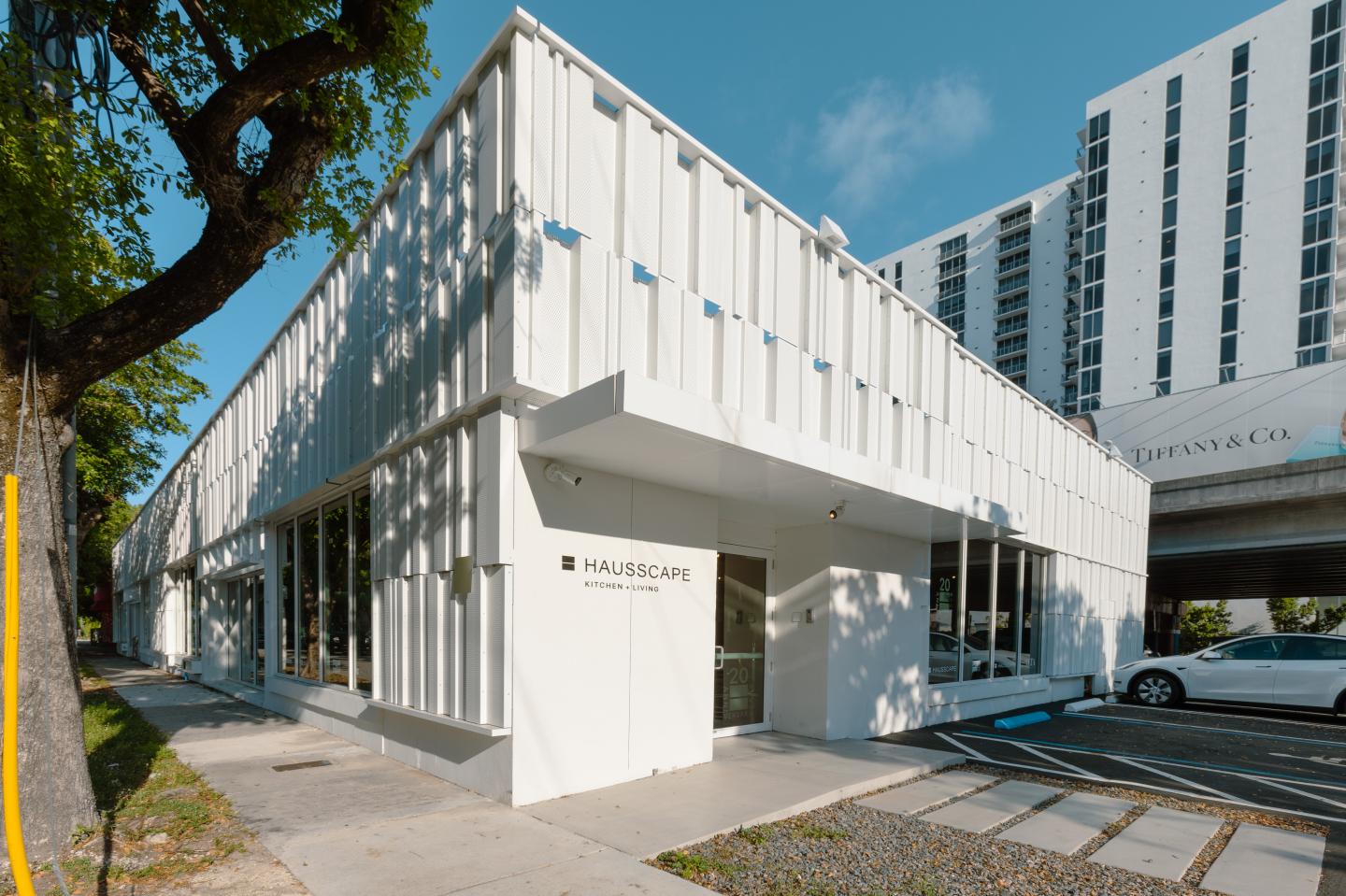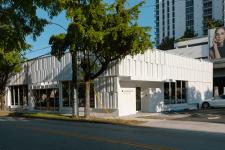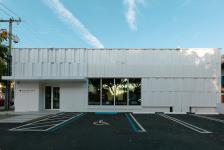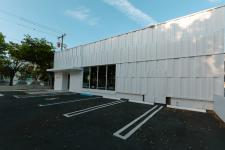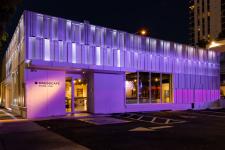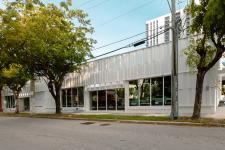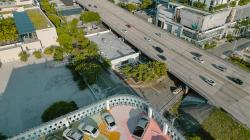This is a façade intervention in the Design District area of Miami, characterized by its elaborate and brilliantly designed catalog of facades. Although the intervention on the existing building measuring 132 feet x 60 feet (40 meters x 18 meters) had to consider this influential environment, it was conceived as understated rather than provocative, in line with the brand's commercial proposal.
The façade intervention was carried out on a 40-year-old building made of concrete and masonry, with its entire shell preserved. The existing building is 14 feet tall and features five large windows and two entrances crowned with their canopies.
The strategy involved subtly concealing the various functional elements of the façade using a skin whose silhouette allows the original building to remain visible. This taller skin was designed with custom folds and perforations, preserving the openings of the original building.
The proposal addresses the strong winds typical of South Florida through various perforations. The attachment system is mechanical, using screws at all connections, including its attachment to the existing building.
The structure consists of steel with an aluminum framework, and it incorporates 42 different types of custom-folded aluminum panels, 3 mm thick and painted in a warm white color (milky white). These 42 panels are all the same height, totaling 238 folded panels interconnected in a continuous series of folds. Each panel was specifically designed to be precisely attached to the functional requirements of the existing building, which remained unaltered.
Designed with a continuous series of folds at different rhythms, the façade gains movement and dynamics, reinforcing the longitudinality of the building. Three specific areas are accentuated with deeper folds, suggesting a different function on the façade. The customized design of the folds allows for a play of depths where lighting maximizes its visual impact.
The system was designed to function as a whole, meaning the panels are interconnected to cover the mechanical anchoring points of the system. All paneling is mounted on aluminum tubes, which are visible behind the system, suggesting a modular presence. The various folds serve as an economical and sustainable design resource, resulting in a subtle and understated order for the façade.
As previously explained, the Miami Design District was essentially conceived as a highly spectacular catalog of facades, which made us consider the strategy we should employ to achieve a dialogue with the rest of the facades, while facing the challenge of a very low-cost budget compared to the others. We decided to create a modular system using affordable materials, with an emphasis on personalized and sustainable design. As a result, we designed tall modules [4'-1 1/2"] that can be transported in a container, easily transported to the site, and ultimately, easy to handle for installation. This economical and sustainable design approach resulted in an orderly and understated aesthetic proposal.
We emphasize the work carried out by the professional office, valuing the attributes specifically tailored to the project. The development of each piece was carefully planned to minimize material waste. The dimensions were studied to simplify maritime transport. Lastly, each piece was designed for assembly, ensuring easy manipulation and construction. We believe that customized work represents added value compared to the serial production prevalent in the façade market today.
2022
2022
Surface
Façade intervention 345 sqm
Project Team
Construction Documents:
Arch. Milca Amado, Arch. Julieta Setton
Concept design
Arch. Vanik Margossian
Renders:
Arch. Vanik Margossian
Arch. Juan Ignacio Rosales
General Contractor
Ricardo Bebchik
Providers
Qi. Alum –Aluminium decorative Materials
Consultants
Luis Bebchik
Project Manager
Engineer Alejandro Perez
